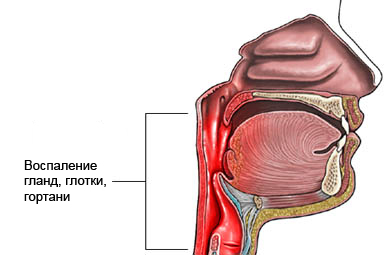The symptoms of viral upper respiratory tract infections – colds and flu
Cold
Cold symptoms usually disappear on their own within 1-2 weeks.
Symptoms include:
- Nasal congestion;
- Cold;
- Sneezing;
- Sore throat;
- Headache;
- Malaise (bad feeling);
- Lack of or minimum temperature rise.

Flu
Flu symptoms are similar to cold symptoms, supplemented with heat.
Symptoms include:
- Fever;
- Chills;
- Malaise (usually, severe fatigue);
- Decreased appetite;
- Dry cough;
- Runny or stuffy nose;
- Headache;
- Muscle aches (usually, strong);
- Sore throat;;
- Watery eyes;
- Nausea and / or vomiting.
Most people are familiar with these symptoms, However, there are some characteristic features:
Cold
Nasal discharge, usually, first clear and watery, but later becomes thick and acquire yellow or green. Yellow or green discharge in conjunction with the temperature, pain on his face and teeth, remaining time can signal the beginning of sinus infection. Blood in the mucus or sputum in conjunction with the headache more likely indicates a sinus infection.
Dry cough
A dry cough is much less problematic, wet. If the cough begins to stand out yellow colored sputum, green color, especially with signs of blood, this may be the beginning of bronchitis or pneumonia. In this case, you should immediately seek medical advice. This is particularly important, if the patient smokes.
Sore throat
If you have a sore throat, you need to perform an initial inspection with a flashlight. You also need to examine the upper part of the neck slightly below the jaw and ear. If the glands are swollen and the color of bright red throat, or surface covered with yellow or white mucus (discharge or exudates), this may be the start of an acute pharyngitis, which should be treated with penicillin (for the prevention of rheumatic fever).
For more information you need to see a doctor.
